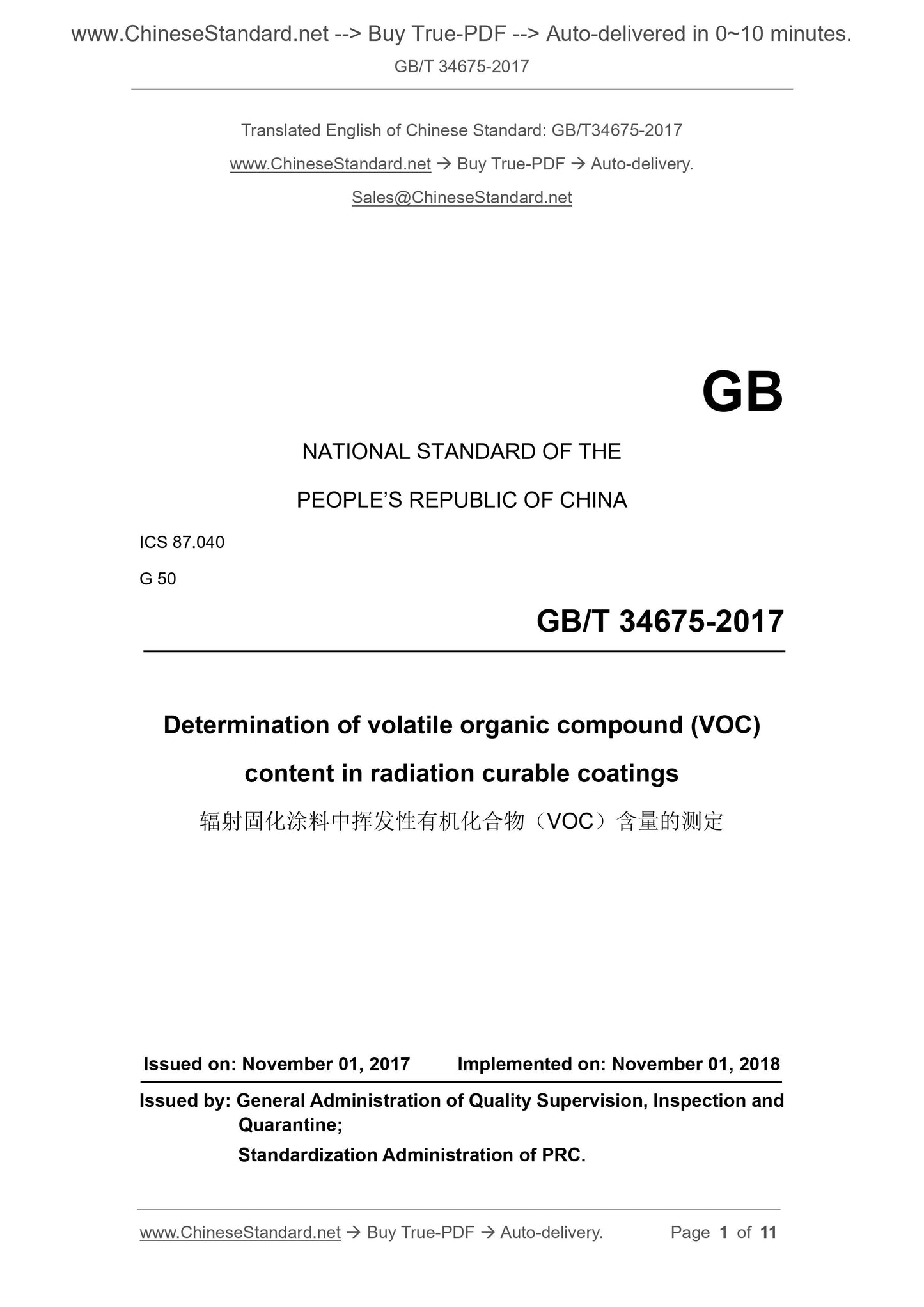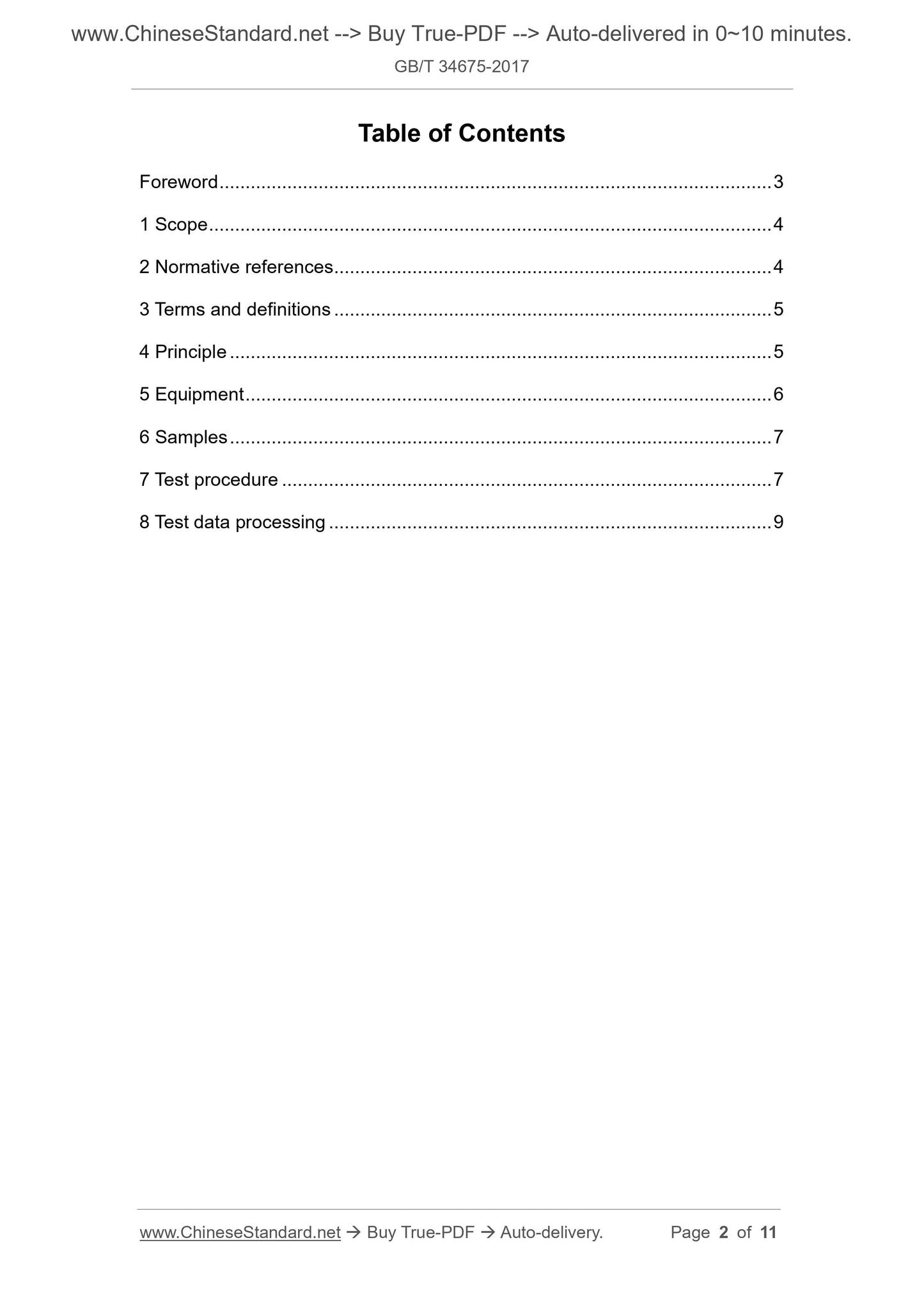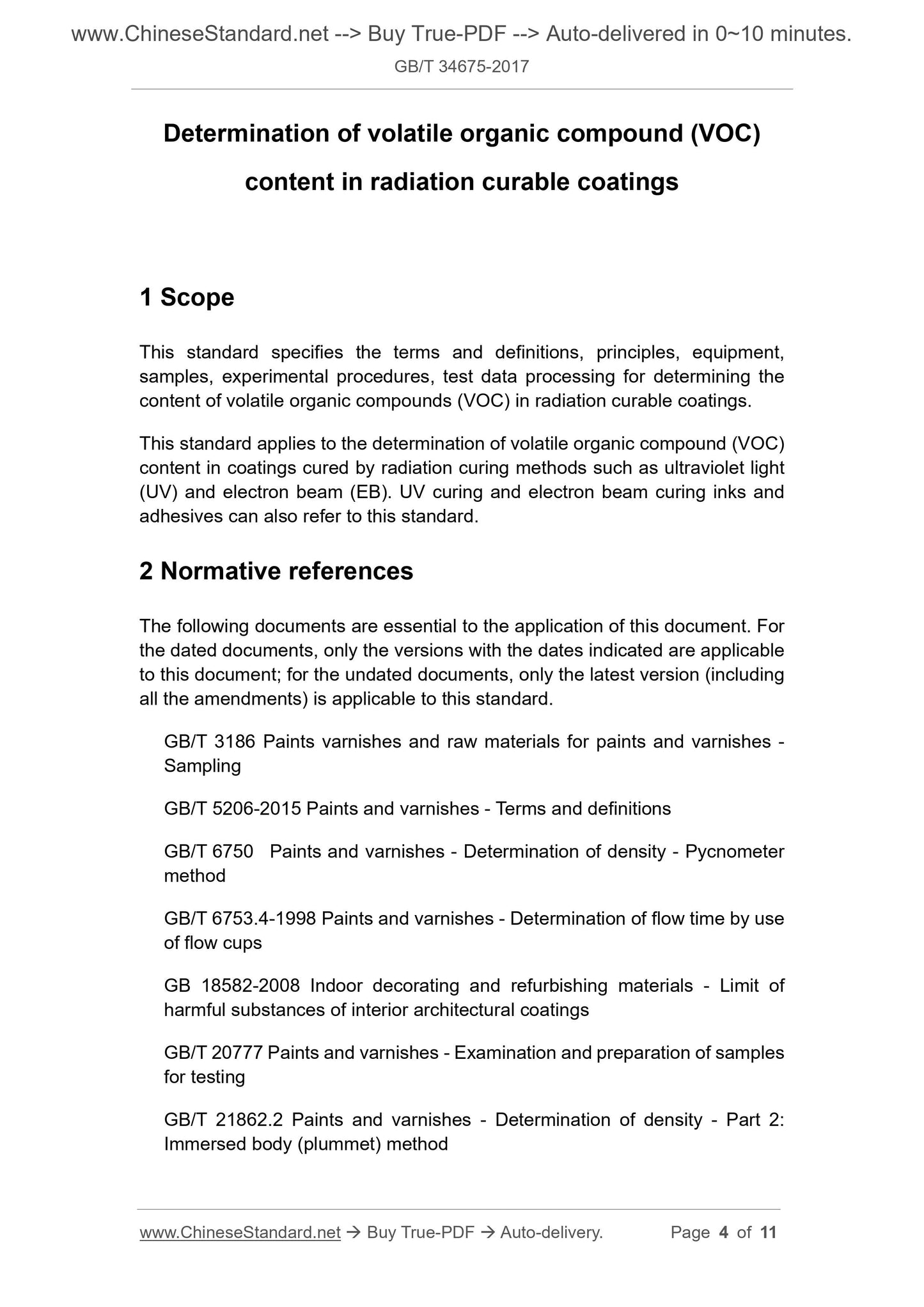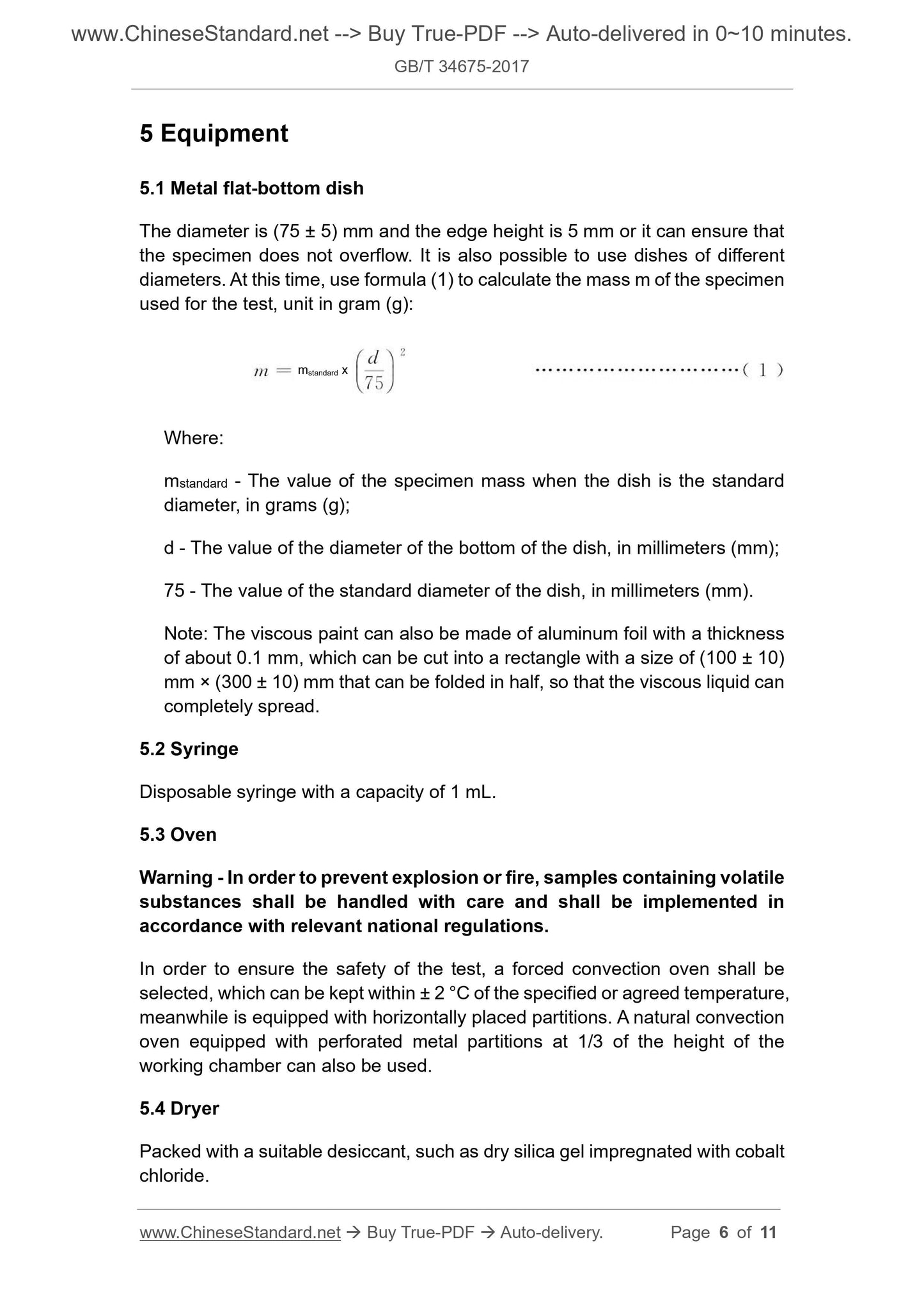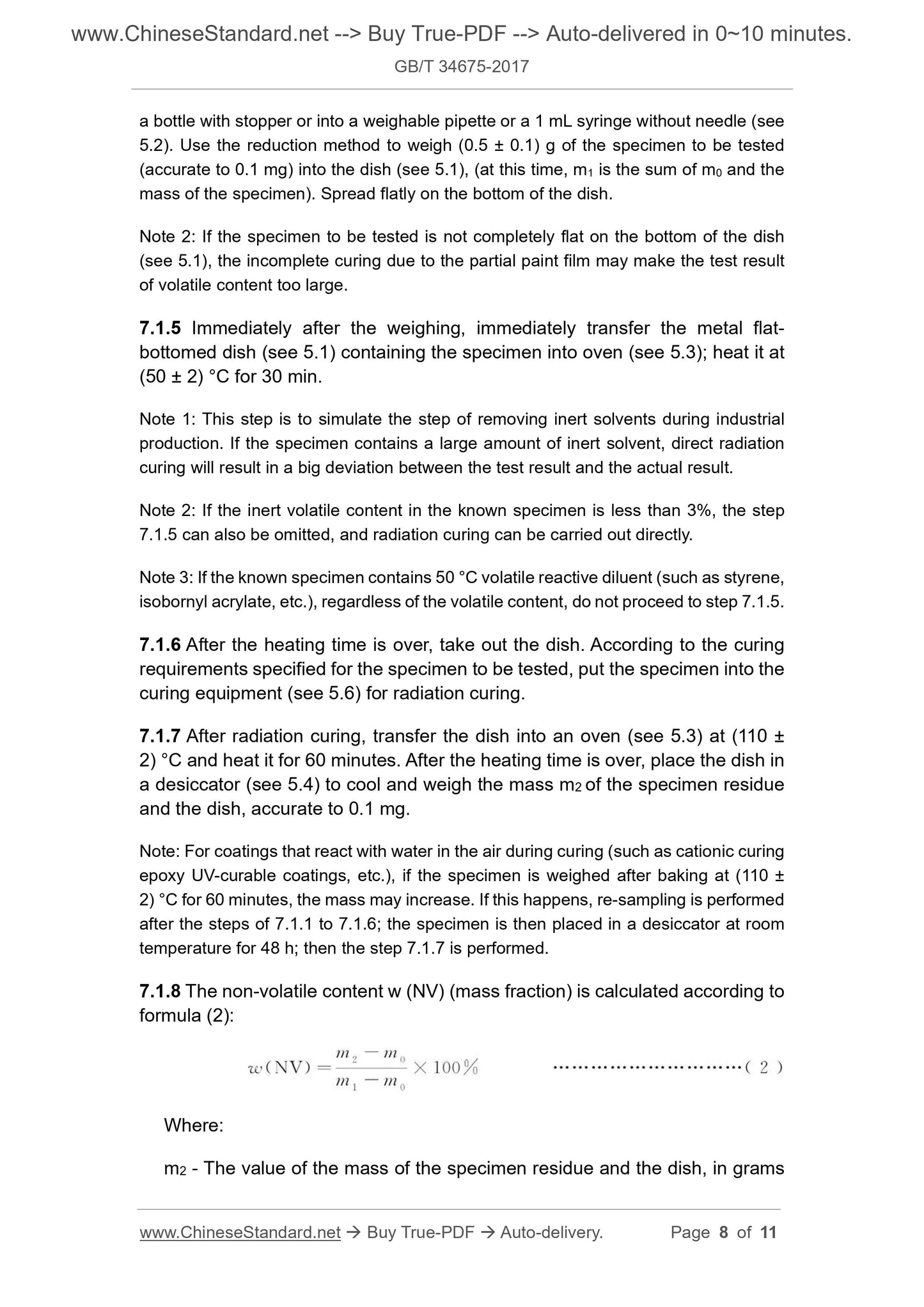1
/
of
5
www.ChineseStandard.us -- Field Test Asia Pte. Ltd.
GB/T 34675-2017 English PDF (GB/T34675-2017)
GB/T 34675-2017 English PDF (GB/T34675-2017)
Regular price
$155.00
Regular price
Sale price
$155.00
Unit price
/
per
Shipping calculated at checkout.
Couldn't load pickup availability
GB/T 34675-2017: Determination of volatile organic compound (VOC) content in radiation curable coatings
Delivery: 9 seconds. Download (and Email) true-PDF + Invoice.Get Quotation: Click GB/T 34675-2017 (Self-service in 1-minute)
Newer / historical versions: GB/T 34675-2017
Preview True-PDF
Scope
This standard specifies the terms and definitions, principles, equipment,samples, experimental procedures, test data processing for determining the
content of volatile organic compounds (VOC) in radiation curable coatings.
This standard applies to the determination of volatile organic compound (VOC)
content in coatings cured by radiation curing methods such as ultraviolet light
(UV) and electron beam (EB). UV curing and electron beam curing inks and
adhesives can also refer to this standard.
Basic Data
| Standard ID | GB/T 34675-2017 (GB/T34675-2017) |
| Description (Translated English) | Determination of volatile organic compound (VOC) content in radiation curable coatings |
| Sector / Industry | National Standard (Recommended) |
| Classification of Chinese Standard | G50 |
| Classification of International Standard | 87.040 |
| Word Count Estimation | 10,130 |
| Date of Issue | 2017-11-01 |
| Date of Implementation | 2018-11-01 |
| Issuing agency(ies) | General Administration of Quality Supervision, Inspection and Quarantine of the People's Republic of China, Standardization Administration of the People's Republic of China |
Share
